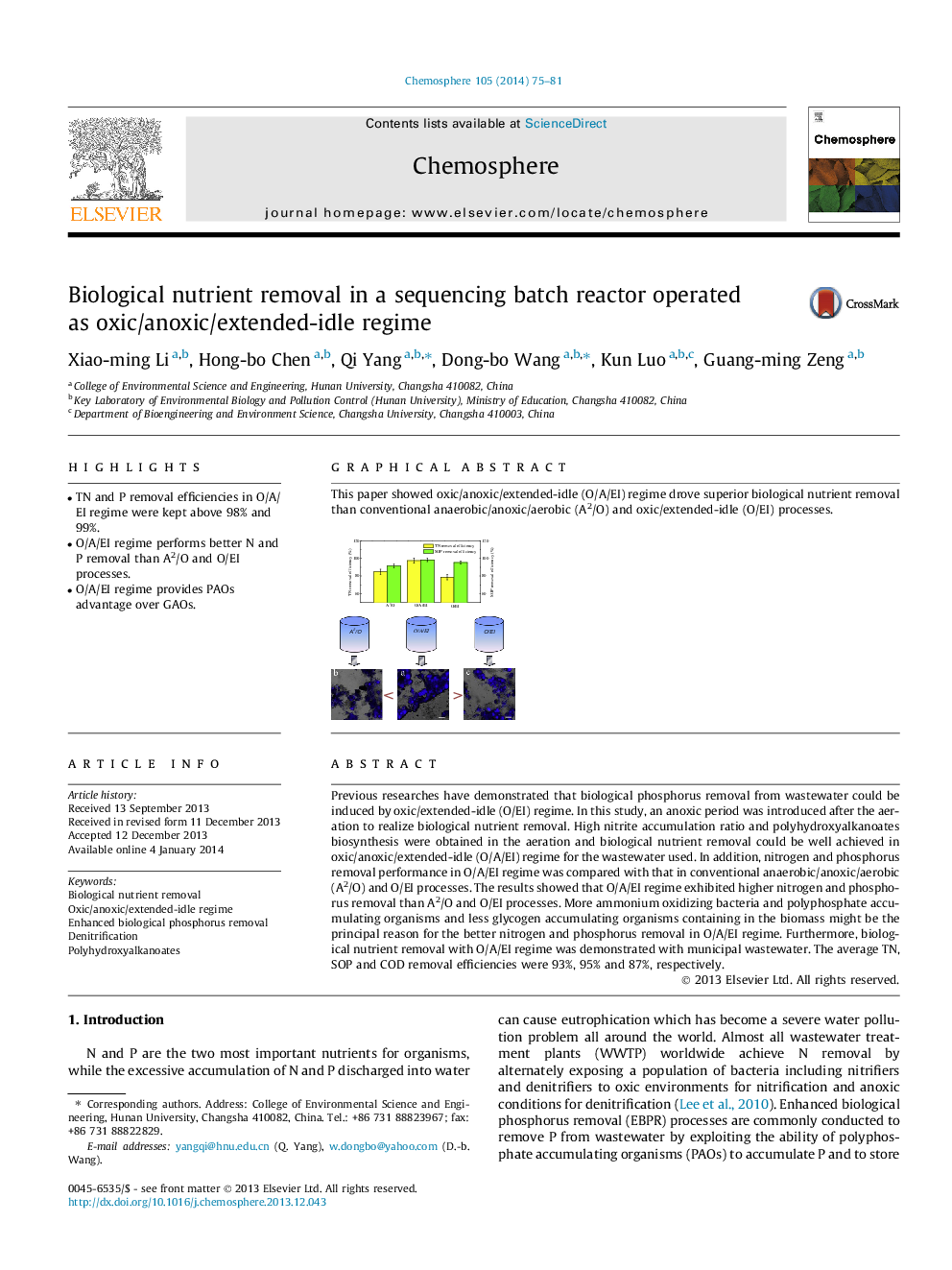| Article ID | Journal | Published Year | Pages | File Type |
|---|---|---|---|---|
| 4408881 | Chemosphere | 2014 | 7 Pages |
•TN and P removal efficiencies in O/A/EI regime were kept above 98% and 99%.•O/A/EI regime performs better N and P removal than A2/O and O/EI processes.•O/A/EI regime provides PAOs advantage over GAOs.
Previous researches have demonstrated that biological phosphorus removal from wastewater could be induced by oxic/extended-idle (O/EI) regime. In this study, an anoxic period was introduced after the aeration to realize biological nutrient removal. High nitrite accumulation ratio and polyhydroxyalkanoates biosynthesis were obtained in the aeration and biological nutrient removal could be well achieved in oxic/anoxic/extended-idle (O/A/EI) regime for the wastewater used. In addition, nitrogen and phosphorus removal performance in O/A/EI regime was compared with that in conventional anaerobic/anoxic/aerobic (A2/O) and O/EI processes. The results showed that O/A/EI regime exhibited higher nitrogen and phosphorus removal than A2/O and O/EI processes. More ammonium oxidizing bacteria and polyphosphate accumulating organisms and less glycogen accumulating organisms containing in the biomass might be the principal reason for the better nitrogen and phosphorus removal in O/A/EI regime. Furthermore, biological nutrient removal with O/A/EI regime was demonstrated with municipal wastewater. The average TN, SOP and COD removal efficiencies were 93%, 95% and 87%, respectively.
Graphical abstractThis paper showed oxic/anoxic/extended-idle (O/A/EI) regime drove superior biological nutrient removal than conventional anaerobic/anoxic/aerobic (A2/O) and oxic/extended-idle (O/EI) processes.Figure optionsDownload full-size imageDownload as PowerPoint slide
